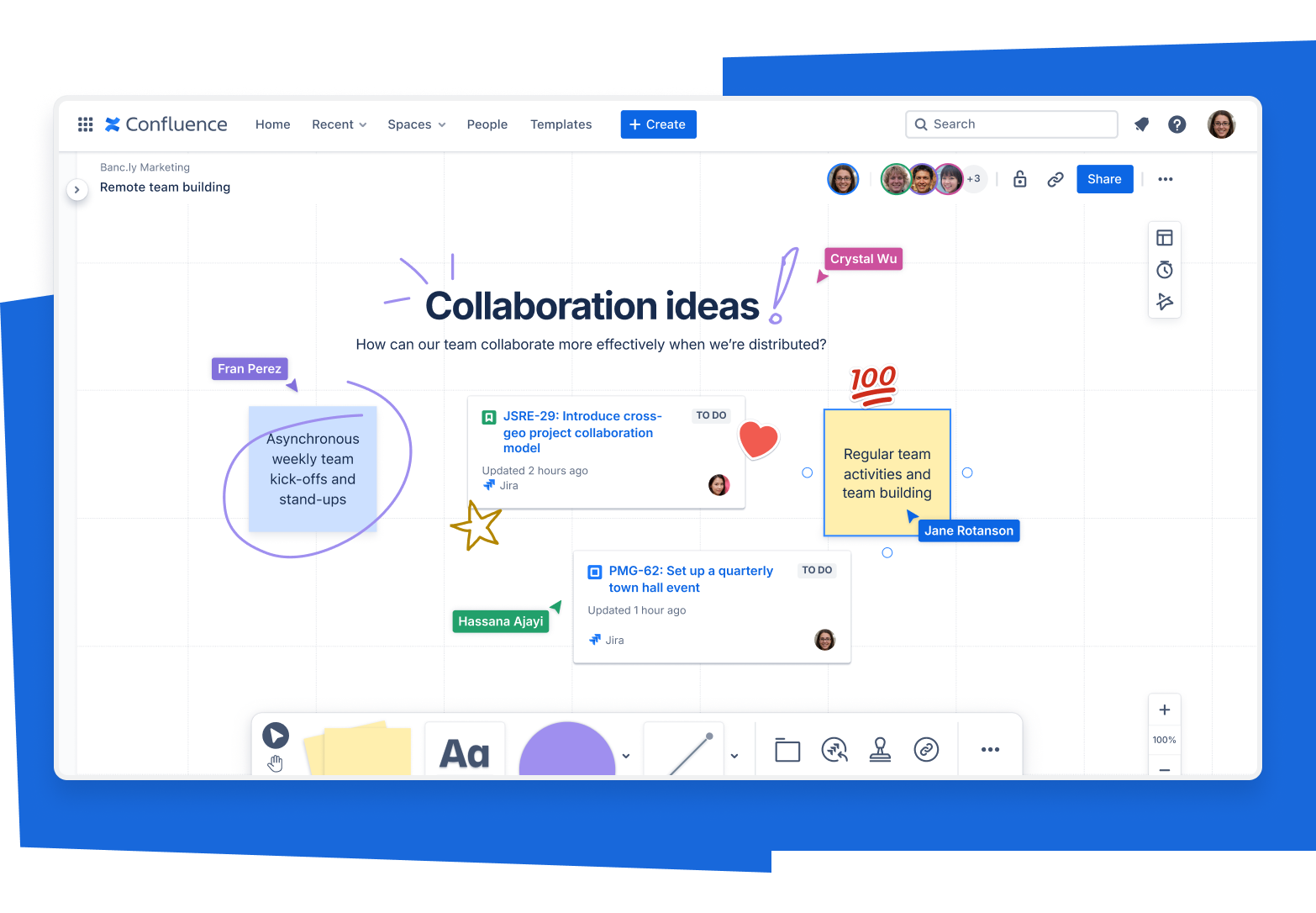Iceberg template
Unlock hidden insights and transform complex problem-solving.
Understanding the root causes of complex problems is one of the most significant challenges teams face across industries. Surface-level observations often mask deeper, more critical insights that can distinguish between superficial solutions and transformative strategies. Teams risk addressing symptoms rather than fundamental issues without a systematic approach to uncovering these hidden factors.
An iceberg template provides a robust visual framework that allows teams to dig beneath the surface, revealing the underlying structures, patterns, and mental models that drive observable events. By capturing visible elements and hidden causes, this tool transforms how businesses approach problem-solving, strategic planning, and critical analysis.
With Confluence Whiteboards, teams can create and customize iceberg diagrams to clarify complex situations. This approach enables more nuanced decision-making, improves stakeholder communication, and ensures that insights are captured, shared, and explored collaboratively. Whether you're analyzing a business challenge, setting goals, or exploring system-wide issues, an iceberg template can be a game-changing tool for deeper understanding.
Make an iceberg diagram for free with Confluence whiteboards
Benefits of using an iceberg template
Improves visual clarity
The iceberg template offers a powerful visual framework that transforms complex information into an easily digestible format. This template provides a systematic approach to understanding multifaceted concepts by structuring ideas into visible and manageable layers.
Imagine peeling back the layers of an iceberg, where the tip represents only a tiny fraction of the entire structure beneath the surface. Similarly, this template helps individuals and teams see beyond immediate, surface-level observations and gain valuable insights from the more profound, interconnected factors that drive a situation or problem.
Check out the free concept map template for another way to visualize complex ideas.
Encourages critical thinking
A key advantage of an iceberg chart template is its ability to challenge surface-level thinking. Traditional problem-solving often focuses on the more obvious symptoms or issues, but this template compels users to dig deeper.
The diagram naturally promotes a more profound, analytical approach to understanding complex scenarios by requiring individuals to explore the additional layers beyond the obvious. This method transforms passive observation into active investigation, pushing users to ask probing questions like "What underlying factors are contributing to this issue?" or "What systemic influences might be at play?"
Simplifies communication
Complex ideas can be challenging to communicate, especially when different stakeholders have varying levels of understanding. An iceberg template is a universal language, breaking intricate concepts into a visual narrative that speaks to diverse audiences for more collaborative meetings.
Whether you're presenting to executives, team members, or clients, the diagram you create using an iceberg template can provide a clear, shared view of a problem or concept that everyone will understand. Displaying multiple perspectives in a single, intuitive graphic bridges communication gaps, encourages project collaboration, and ensures everyone looks at the same comprehensive picture.
Ensure all key stakeholders are adequately informed with the stakeholder communications template.
Enhances problem-solving
Traditional problem-solving often treats the base symptoms rather than addressing root causes. The iceberg template revolutionizes this approach by revealing hidden dynamics that go unnoticed. By mapping out both visible and invisible elements, teams can identify the fundamental drivers of an issue.
This comprehensive view allows for more strategic, long-lasting solutions. Instead of applying quick fixes, businesses can develop targeted interventions that address the core challenges, leading to more sustainable and effective problem resolution.
The free five whys template is a great way to facilitate engaging problem-solving.
Promotes planning
Strategic planning requires a forward-looking perspective that addresses immediate concerns, needs, and potential future implications. An iceberg template is an exceptional scenario and project planning tool, allowing teams to visualize current challenges, emerging trends, and possible disruptions.
By systematically exploring visible and hidden layers, businesses can anticipate obstacles, develop contingency plans, and create more robust strategies. It can transform your planning from a reactive process to a proactive, insight-driven exercise.
Elevate your planning efforts with the free project planning template.
